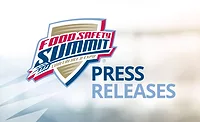Increased Safety and Traceability throughout the Supply Chain Drive Business Value

Consumers are more discerning than ever when it comes to food safety. The recent TÜV SÜD Safety Gauge reveals that consumers are placing a higher value on the importance of safety in food beyond the product brand, and they are increasingly aware of food safety dangers and recalls. Setting aside the recent horsemeat scandal, 20 percent experienced safety issues in the last 5 years. The good news is that there is a great opportunity for businesses to turn consumers’ increasing demands for product safety into a competitive business advantage.
The Safety Gauge shows that 75 percent of consumers surveyed indicate they are willing to pay a premium, averaging 15.5 percent over the regular selling price for food products that achieve exemplary safety standards verified by a credible and independent third party. Furthermore, safety issues and product recalls often translate into important costs and reputational risks for companies. Companies that mitigate those risks and expenses while responding to consumer demand could prove to be adding significant value to companies and their bottom lines.
Businesses do care about food safety but expect increasing safety measures to come with costs. In fact, companies from the food industry estimated they would need to increase production costs by 21 percent to achieve the highest safety standards available. This is where the Safety Gauge proves them wrong.
Food safety starts with an effective control and traceability of the supply chain, and it does not necessarily entail extra costs for the company. The research indicates that only 52 percent of businesses can ensure that their entire supply chain fulfills product safety requirements, and 54 percent are unable to trace every ingredient of their food products throughout the supply chain. This is a serious concern and shows just how vulnerable and complex the modern day supply chain is for most businesses. Many companies we work with have improved the safety of their food products by tightening the quality and safety requirements imposed on suppliers, and that does not involve extra costs for them. The industry should embrace those opportunities to prevent product recalls and increase safety standards.
Reacting after a food scare is less effective than preventing one in the first place; hence the need for investing in safety at the very beginning. Prevention of the next food safety crisis is best achieved when food safety and quality are considered strategic objectives that help improve financial performance.
Globally, 84 percent of food companies said they meet or exceed minimum safety requirements, with 53 percent of companies predicting they will significantly exceed the minimum standards in the next 5 years. This is encouraging but efforts need to be increased at the supply chain level.
While supply chain management from farm to fork is challenging for the food industry, traceability is a critical part of the safety requirements that businesses should adopt and maintain to reduce the scope of potential contamination and speed up the process in the event of a recall.
The best approach to food safety begins at the farm level with seed testing and tests pertaining to soil condition as well as animal feed. This should be supplemented with staff training, implementation of sound agricultural practices and third-party auditing/certification.
Interestingly, 90 percent of consumers surveyed said they want to know food products are being independently tested before being sold in the market. For consumers, ‘raw meat and fish’ and ‘milk, dairy and eggs’ were surveyed as the two food categories of highest concern.
Businesses can work with independent third parties to gauge the quality of products at the distribution and retail stage. Third party certification providers can perform checks on packaging, food containers, manufacturing equipment, the storage facility, and more, and supplement these checks with hygiene and vendor assessment audits.
Are businesses ready to give consumers what they want? Consumers will continue to demand higher benchmarks and better safety standards from all companies. It is clear that companies across the supply chain are working hard to improve product safety and should take even further steps to do so. Higher product safety levels not only enhance the wellbeing of consumers, but mitigate risk and add genuine value to manufacturers’ products.
Ishan Palit is the CEO of the Product Services Division of TÜV SÜD.
Looking for quick answers on food safety topics?
Try Ask FSM, our new smart AI search tool.
Ask FSM →








